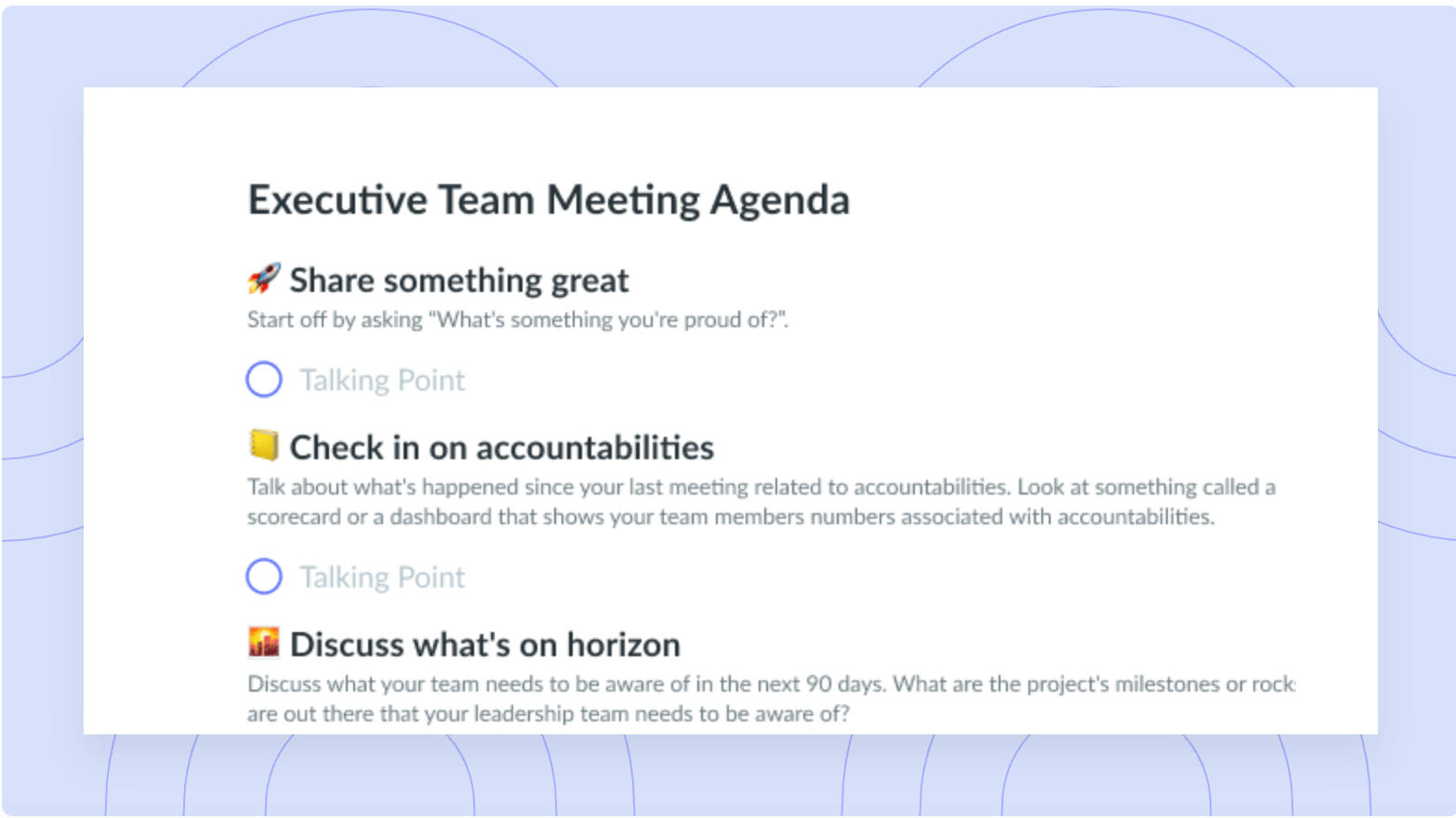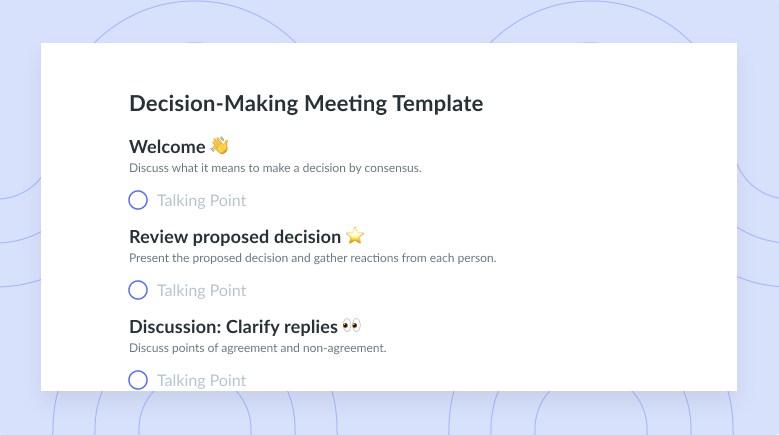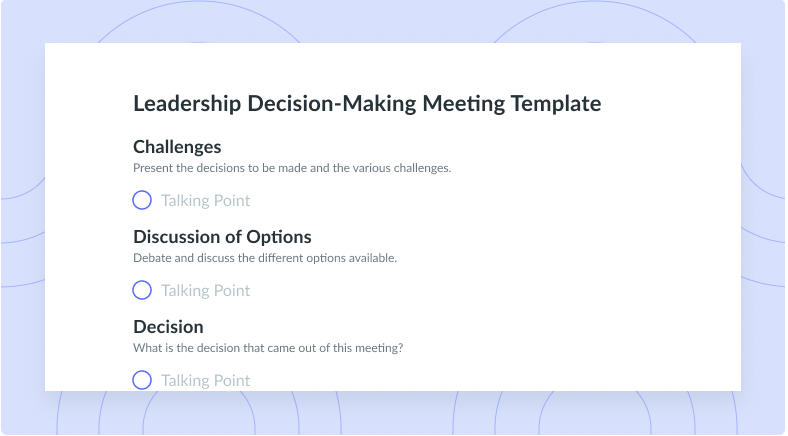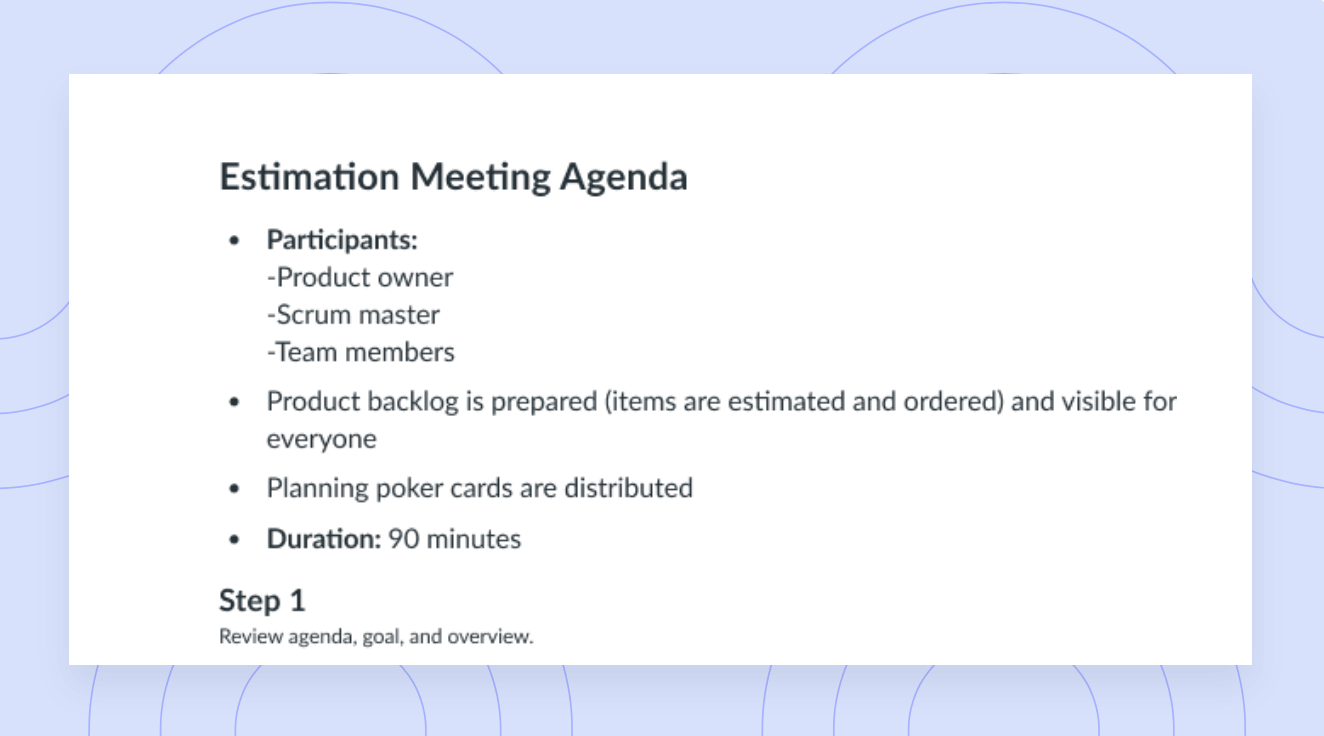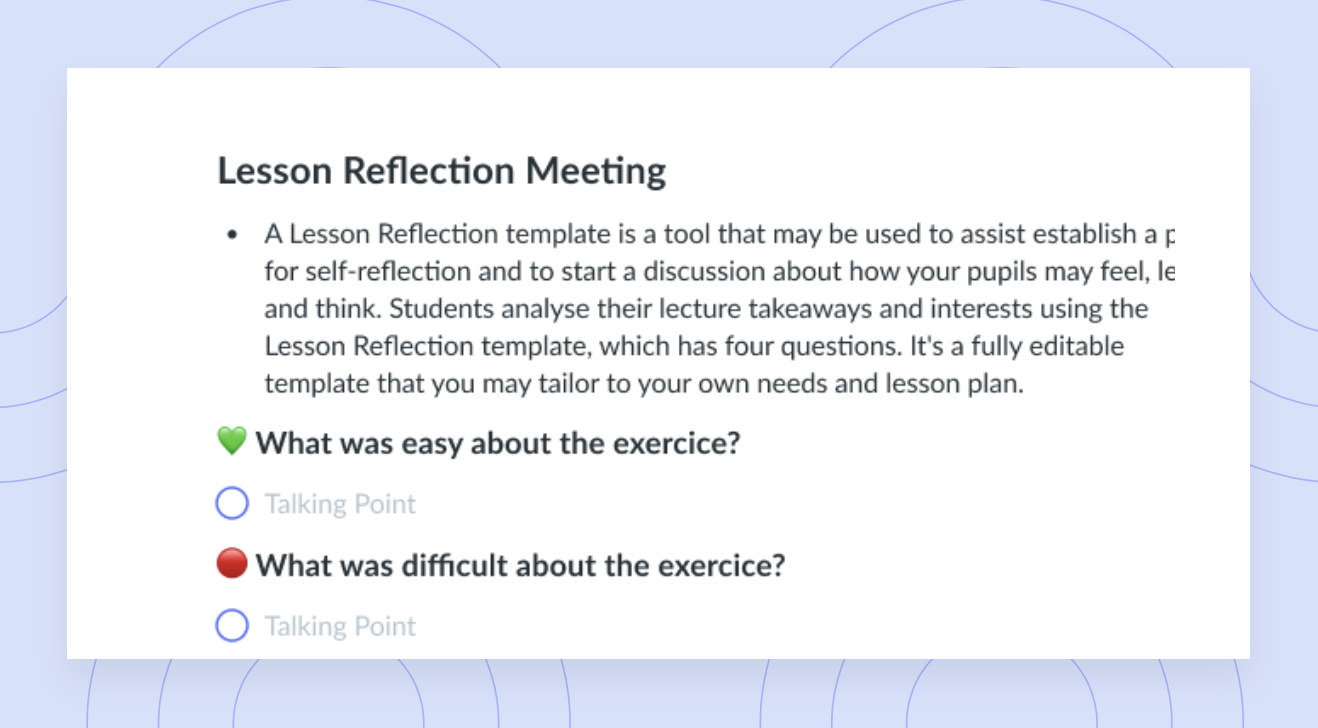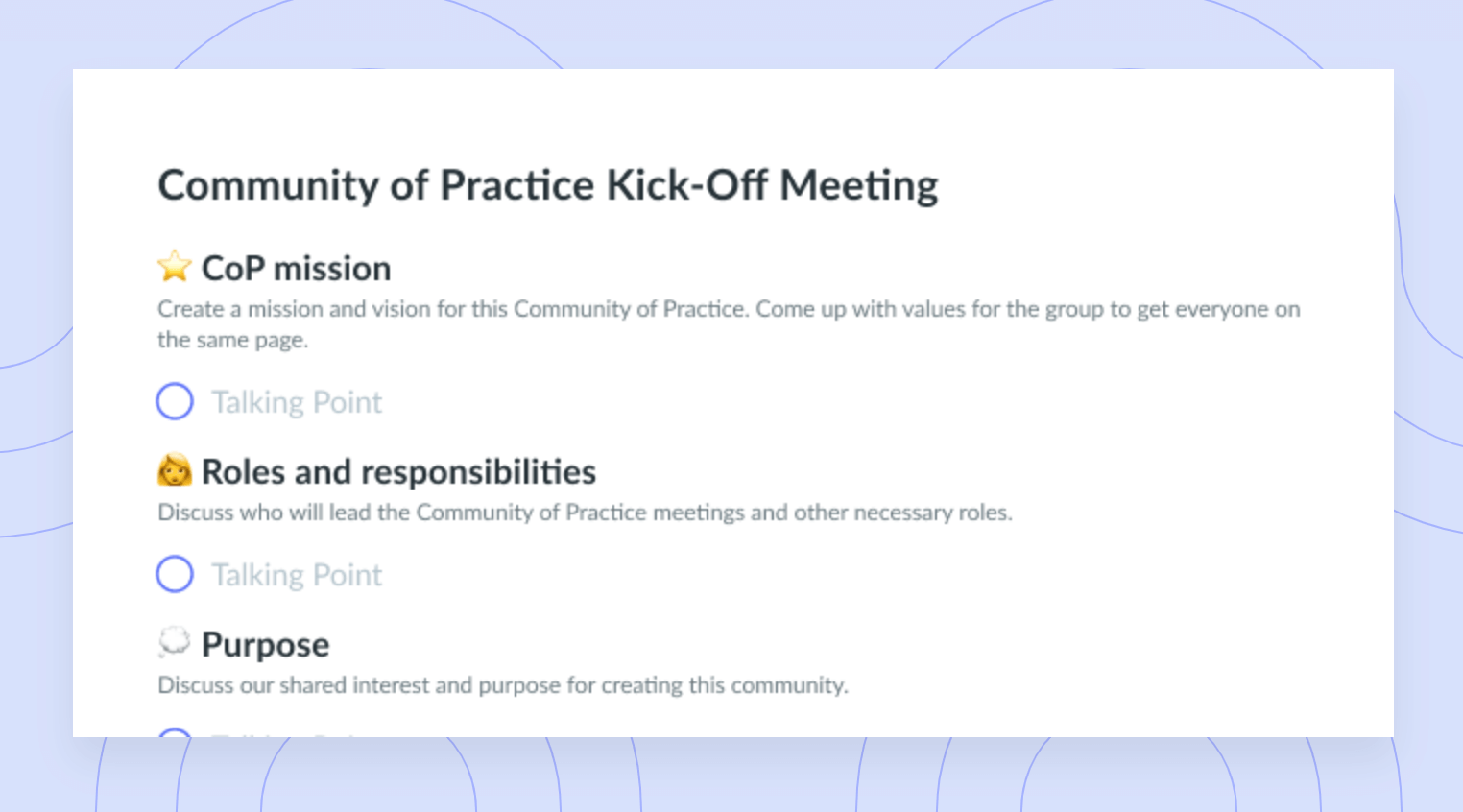8 Tips to Achieve Top Performance in Collaborative Meetings
Learn the four essential elements of collaborative meetings and best practices to execute them effectively.
A collaborative meeting is an interactive discussion between a group of people who are working together to achieve a common goal. These meetings serve to share a sense of purpose amongst team members and inform each individual on what needs to be worked on next, to achieve collective success.
Some examples of collaborative meetings include project kick-offs, status meetings, sign-offs, brainstorming sessions and strategy sessions.
In this article, Fellow has outlined the major elements of a collaborative meeting and 8 great tips for engaging collaborative meetings. Keep scrolling down to learn more about how to execute this type of productive meeting with your team!
What are the elements of a collaborative meeting?
1 Planning
Planning is one of the essential elements of a collaborative meeting. Planning includes designing the meeting agenda, which dictates the tone and direction of the meeting.
Your meeting agenda should include a list of topics that will be discussed throughout the meeting and make the overarching goal evident to the participants. Make sure to welcome contributions and suggestions from your team members to add to the agenda.

It’s a good idea to use a collaborative meeting agenda tool so everyone has access to the agenda before the meeting and is prepared accordingly.
2 Goal-setting
Any collaborative meeting should have a goal in mind that is clearly set. As a group, you should identify the intended outcome of the collaboration and agree on the goal you are trying to achieve together.

Part of achieving your goal might mean designating certain roles throughout the group so that you can keep organized and on top of the responsibilities involved in attaining your goal. Each individual task should be progressing the overall objective of the meeting.
3 Communication
Communication is an essential pillar to achieving a successful collaborative meeting. To encourage strong communication during your collaborative meeting, ensure that each participant is given the same amount of time and opportunities to communicate their point.

Bring all voices into the conversation with Fellow
If you’re brainstorming ideas and making decisions, you’ll get better results when your whole team contributes. Fellow’s real-time note-taking tool promotes collaboration and encourages everyone to participate actively in the conversation.
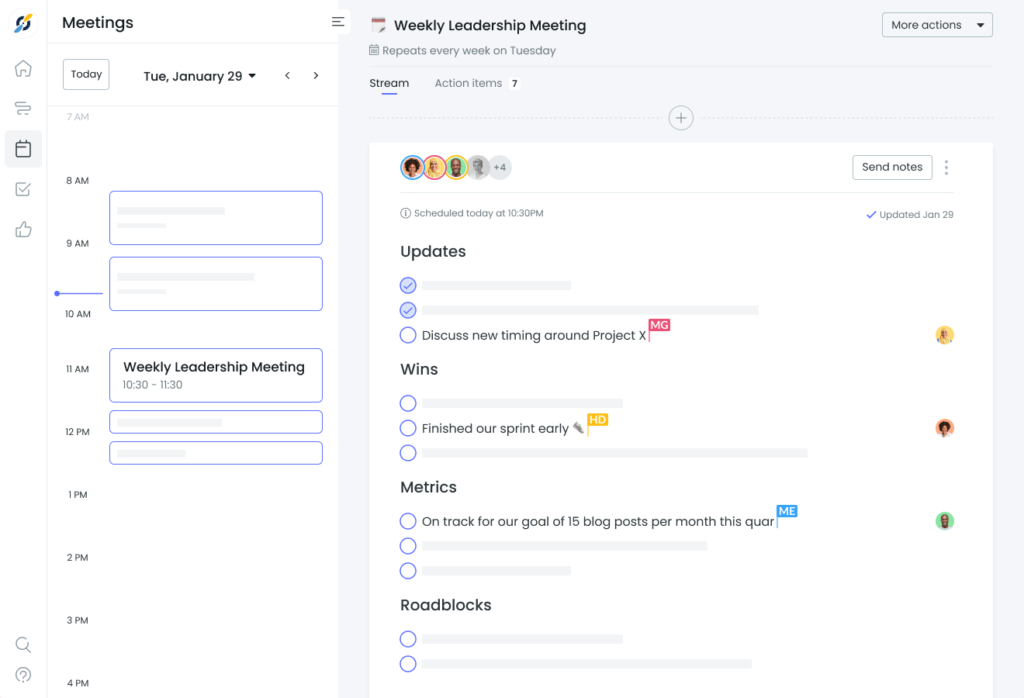
Communication also means negotiation and meditation as ideas are bound to differ and the best approach to achieve the goal will vary among the group. It’s important that the group listens attentively to different points of view and that all points are given the same time and consideration during the meeting.
4 Decision-making
In a collaborative or cross-functional group, it’s difficult for everyone to come to the same decision. Participants need to be comfortable knowing that there is almost always a compromise that is involved in coming to a final decision.
Where consensus-based decision making is usually the most effective, there may be certain situations where there is a strong, unwavering disagreement. In these situations, if there is no ability to compromise, a vote might need to be made amongst the group to come to an appropriate and fair decision. No matter the decision, the team needs to put their differences aside to work together.
8 Tips for effective collaborative meetings
1 Have a clear meeting goal
Your group is going to work a lot more effectively if they understand the goal that they’re working towards collectively. Take the time to properly explain the purpose of the meeting or initiative you’re working towards so that your participants can fully understand, prepare for, and buy into the overarching goal.
Once your team members understand they’ll feel much more motivated by their own individual responsibilities, which will evidently help the team reach the ultimate goal. Setting a clear goal sets the tone for the collaborative meeting, where the group can then coordinate how they’ll work together to achieve success.
2 Provide background and context
Giving your team some context about the goal you’re working towards is as important as the goal itself. It’s a great idea to attach important documents to your meeting agenda, prior to the meeting so that they have some time to look over the topics that are going to be discussed.

When you provide a background concerning the goal of the collaborative meeting, you’re giving your team a better understanding of why they’re working on a certain initiative and why it’s important.
3 Set participant expectations
Expectations need to be set before the meeting takes place. In order to achieve this, you can create a structured, repeatable process for your meetings that is well understood by all of your participants. Here’s a meeting process you can adopt to have more productive and collaborative meetings:
- Apply a meeting template
- Build your agenda as a team
- Record meeting notes
- Assign action items
- Organize ideas and priorities
- Exchange feedback about the meeting
Being fair, clear and transparent about your expectations prior to the discussion is going to make it much easier and more comfortable for team members to participate in a generative way because no one will be caught off guard or feel unprepared.
Your team is going to feel confident and ready when they walk in (or log in) to a meeting where they know the appropriate etiquette, structure, methodologies and time frame. Your expectations of each individual should be communicated to them before the collaborative meeting or series of meetings begin.
4 Stay focused
Having a meeting agenda that has specific items to check off is a great hack to achieve focus amongst your team.
Your meeting agenda once completed is going to keep you and the group on track during the collaborative meeting.
When there are several participants in a meeting, it’s really easy to get a little derailed and off-track with the topic of conversation. Using your meeting agenda is going to allow you to refer back to where you were in the meeting and to keep progressing through each item, without losing your spot and therefore, using your valuable time more wisely.
5 Take advantage of technology
Take advantage of technology! We live in a world where we can’t live without it, so we may as well embrace it, right?
Collaborative meeting tools like Fellow allow you to work on collaborative meeting agendas and track action items so that you and your team can stay as organized as possible. Your team can record action items and automatically carry-forward incomplete action items to the next meeting.

Having all of your tools in one place is going to propel productivity and keep you super organized.
6 Set a comfortable atmosphere
Setting a comfortable atmosphere for your collaborative team meeting is important. Using a warm, genuine approach to your meeting is going to make team members feel a lot more at ease and much more willing to contribute to the conversation. Be as inclusive as possible and show interest in the entire team’s ideas.
It’s important to read the energy of the room to see if it has shifted, if participants seem engaged, if participation was higher than usual, or if people are looking like they need a little more guidance. Make sure that you’re asking quieter or more reserved attendees for their opinion- it’s not always easy to speak up in a group environment but it’s important that the team understands that their ideas and contributions are valued by you and by the others attending.
It’s a good idea to make some space for any questions, comments and recommendations. Let your team know that you can make yourself available to them with anything that didn’t have time to be covered in the meeting.
7 Aim for collective decision making
It’s never fun to take on complete responsibility for an effort that’s meant to be collective. Optimize the talent you have in your team and aim for collective decision making. Be attentive to all of the participants’ opinions and perspectives about the project or initiative and how to achieve the major goal that has been set.
At the end of the day, you’re all working together to achieve success and to support one another in getting there. All views need to be considered evenly, regardless of the different roles that have been assigned. If the decision comes to a vote, ensure that all of the votes are given consideration and that it has been conducted in a just way.
8 Set a regular meeting cadence
Productive collaborative meetings can’t only happen once in a while. Set a meeting cadence so that you and your team can reconnect and follow up on the progress of achieving the goal. If you create a regular schedule, it will encourage accountability amongst your team members and encourage discipline.
Set your calendars with recurring invites with reminders so that you can follow up on ideas and the execution of them. This is going to encourage the team to be hands-on, be prepared to share information and progress and allow participants to feel more comfortable to ask for updates and support from others. Set up a regular meeting cadence ASAP so that your team stays updated, connected and in sync with one another.

It’s not always easy to execute a productive meeting- especially when it involves multiple participants. That being said, when you include the necessary elements of a collaborative meeting, it gets a lot easier. Make sure that you plan ahead, set a goal and foster clear communication before you make a decision. Refer back to these 8 tips for engaging collaborative meetings whenever you need some guidance.
Summary
It’s not always easy to execute a productive meeting- especially when it involves multiple participants. That being said, when you include the necessary elements of a collaborative meeting, it gets a lot easier. Make sure that you plan ahead, set a goal and foster clear communication before you make a decision. Remember to stay focused, create a comfortable atmosphere, and set a regular meeting cadence to check-in on cross-functional projects.
Refer back to these 8 tips for engaging collaborative meetings whenever you need some guidance.









